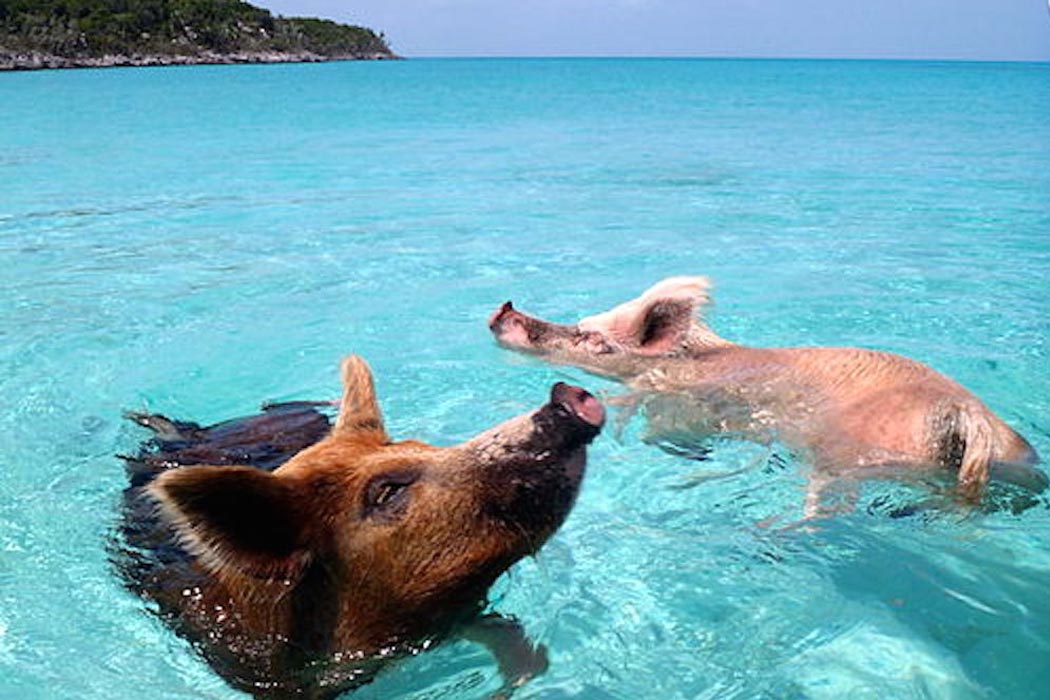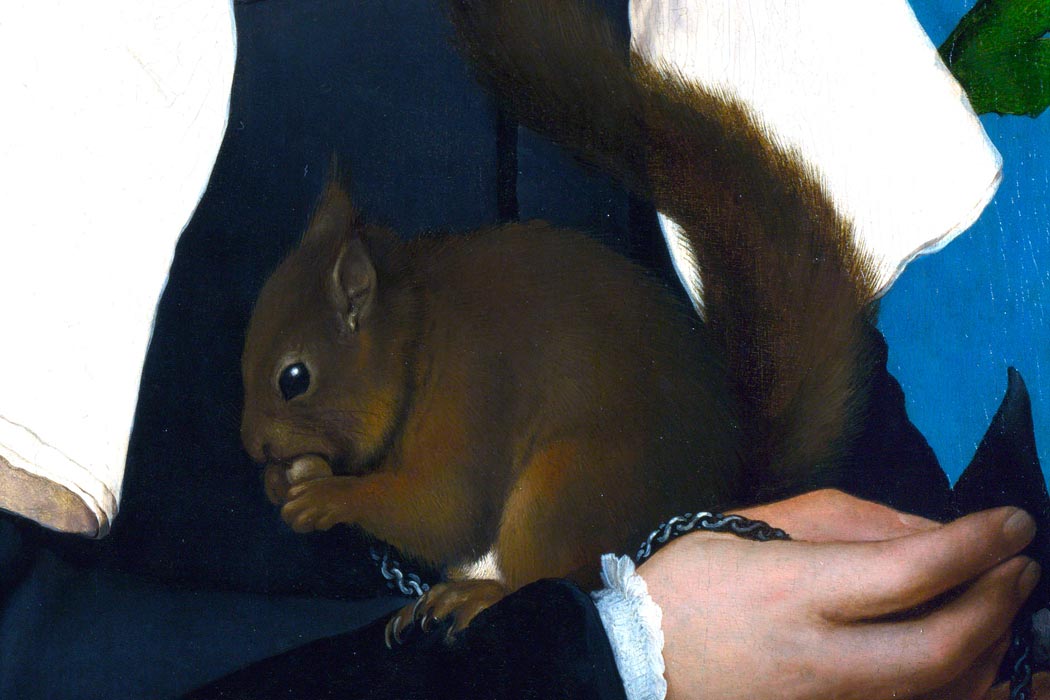The forepaw of a typical eastern gray squirrel is about one half of an inch wide: rather feeble, as far as far as digging tools go. Yet every fall, squirrels become diligent movers of earth, shoveling through soggy leaves and muddy ground to deposit their winter stores of nuts. For the most part, squirrels labor without eliciting much comment from their human neighbors: they are, after all, among the most familiar inhabitants of the American urban landscape. But this wasn’t always the case.
In 2013, University of Pennsylvania historian Etienne Benson published a surprising article about gray squirrels in The Journal of American History. The rodents, it turns out, were almost entirely absent from North American urban parks before the late 19th century. “The dominant image of the eastern gray squirrel in early 19th-century American culture,” writes Benson, “was as a shy woodland creature that supplied meat for frontiersmen and Indians and game for the recreational hunter.” Future president Theodore Roosevelt even wrote of wild squirrel hoards that “swarmed, devastating the cornfields, and at times gathering in immense companies and migrating across mountain and river.”
The present abundance of squirrels in American cities is a product of an early 20th-century fad for keeping squirrels as pets. “Squirrels were part of the new complex of human-animal relationships that emerged in the American city at the turn of the 20th century,” Benson argues. The rise of an urban parks movement in the late 19th century created areas of open space sufficient to sustain squirrel populations. But beyond this, it generated a desire for a tamed version of the vanishing American wilderness among city-dwellers. Pets entered American cities at precisely the period when animals used in labor, like donkeys, horses, and oxen, were being replaced by machinery, and agricultural work was moving beyond the view of urbanites. It was into this vacuum that squirrels emerged as cute tokens of the wilderness, their semi-tamed behavior serving to validate the refinement of the cities that housed them. Benson quotes a 1902 visitor to Boston from Puerto Rico who, upon witnessing Cambridge residents’ fondness for the creatures, was reported have exclaimed, “Everything is civilized here, even the squirrels!”
Benson’s article made a splash online when it was released last year. Yet most who read about his squirrel research didn’t realize that it was part of a larger scholarly trend. Animal history is emerging as one of the hot topics of historical research in the 2010s. The history of animals can occasionally seem esoteric, centering on biological phenomena like “ungulate eruptions” or theoretical discussions of the animal-human boundary. But it’s also immensely fun to research, covering everything from what indigenous Americans made of European-introduced horses (the Aztecs called them “tall deer”) to research into the history of Chinese pigs and medieval capitalism.
“American Whaling Mapped,” by Benjamin Schmidt.
Animal history has also inspired a number of interesting digital experiments—including Benson’s interactive map that plots which US residents applied for permits to import Canadian polar bear trophies between 1997 and 2008. Benjamin Schmidt, an assistant professor of history at Northeastern University, has created a remarkable series of animated maps that take a different approach to mapping animal histories: they record the voyages of 19th-century whalers who were busy hunting cetacean stocks in the Atlantic and Pacific Oceans to near extinction. Meanwhile, researchers affiliated with Stanford University’s innovative Spatial History Project have been exploring the boundaries between human and animal societies with projects like “Animal City,” which charts animal-related businesses in 19th-century San Francisco.
These are contemporary manifestations of a longstanding trend in animal history: big picture, environmental outlooks that rely on generality and aggregation. It’s a style of animal history that has an illustrious pedigree, stretching back to the work of William Cronon and Alfred Crosby in the 1970s and 1980s. More recently, in Guns, Germs, and Steel, Jared Diamond borrowed freely from this scholarship to mount a geographic determinist explanation for European colonialism that hinged on the role of animals as vectors for epidemic disease. Mining a different vein of animal studies—but similarly thinking in very big picture terms—literary critics like Donna Haraway have theorized the human/animal boundary. Meanwhile, anthropologists and historians of early America have explored forms of mediation between the human and animal worlds, like the manitou (supernatural creatures imbued with spiritual power) of Algonquian Indian spirituality.
Yet although animal studies are often classified as environmental history, it’s worth reflecting on what sets animals apart from their environment. Animals are also individuals. They possess a form of subjectivity. And they have historical agency, in the sense that they can act in ways that are self-directed and independent from human control. To write animal history is to enact a delicate balancing act: while most find it theoretically important not to regard animals as independent, sentient beings rather than passive features of the environment, it is often impossible to do so in practice. Animals leave scarce archival traces. And as the historian Amy Kohout has pointed out, even those traces pose unique archival challenges. Historians know exactly what to do with a cache of letters—but we’re less sure about how to approach a stuffed eagle in a drawer.
Recently, however, scholars have been developing a more detailed picture by examining specific cases of animals in history. Virgina DeJohn Anderson, a professor of American history at the University of Colorado, has drawn two strands of early American environmental history—indigenous relations to nature and European colonization patterns—into dialogue with one another. Anderson’s work reconsiders colonial New England and Virginia from the perspective of pigs, horses, and cattle. Her Creatures of Empire (2006) charts the ways that British colonists in New England and the Chesapeake linked civility with the keeping of animals. In a highly original article for the William and Mary Quarterly, Anderson also reconsidered King Phillip’s War from the perspective of livestock herding. Anderson’s work shows that debates over the nature and ownership of domesticated animals played a crucial role in interactions between European colonists and American Indians.
In his influential article “The Rise and Fall of the Plains Horse Cultures,” Oxford University historian Pekka Hämäläinen takes a closer look at the introduction of horses—which were invasive species in the Americas—into the indigenous cultures of the Great Plains. “By reinventing themselves as equestrian people,” writes Hämäläinen, summarizing over a century of scholarship and popular accounts, the Lakota Indians “created one of history’s most renowned horse cultures.” Yet Hämäläinen notes a “bleak undercurrent” running beneath this narrative: the introduction of horses into Plains Indians societies in the 17th century was also hugely disruptive. Horses, he concludes, were “a decidedly mixed blessing,” allowing unprecedented mobility and travel but also creating ecological instability and damaging existing political and social structures.
These studies remind us that even the horse—a familiar animal to most in the 21st century—was an exotic and unfamiliar creature when it first reached the indigenous societies of the early modern Americas. Louise Robbins’ Elephant Slaves and Pampered Parrots (2002) goes further with the study of exotic animals in history, arguing that unusual animals conveyed social status and projected official power. Robbins vividly reconstructs an 18th-century Paris abounding with bizarre creatures and virtually no government regulation—a place where citizens could attend polar bear fights or purchase flying squirrels as pets.

These days, our fascination with unusual animals tends to play out online rather than in city streets. We fawn over videos of giant pandas, or trade emails featuring heartwarming tales like the friendship between a giant tortoise and baby hippo.
One internet sensation, “Pig Beach”—the uninhabited island in the Bahamas frequented by a band of friendly and highly aquatic porcines—actually hints at a history stretching back to the age of Columbus and de Gama. Iberian sailors of the 16th and 17th centuries habitually deposited pigs, goats, chickens, and other domesticated animals on desert islands. The idea was to leave breeding pairs of desirable animals behind, mark the location on a map, and return to it years later to find a thriving population of tasty beasts, ready to feed the famished mariners of the Age of Sail. As with the squirrels studied by Etienne Benson, this short-term goal had unintended consequences, distributing invasive species around the world.
Today, as the global species count continues its precipitous decline, it makes sense to look backward to the deep history of our relationship with animals and to meditate on the enormous historical consequences that have flowed from countless localized interactions between human and beast. Perhaps the squirrels and pigs can teach us a thing or two.







